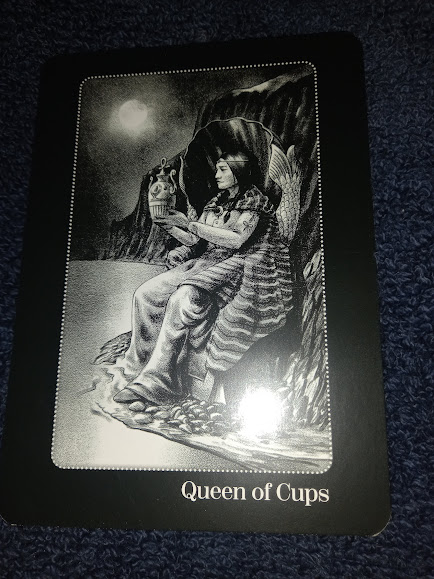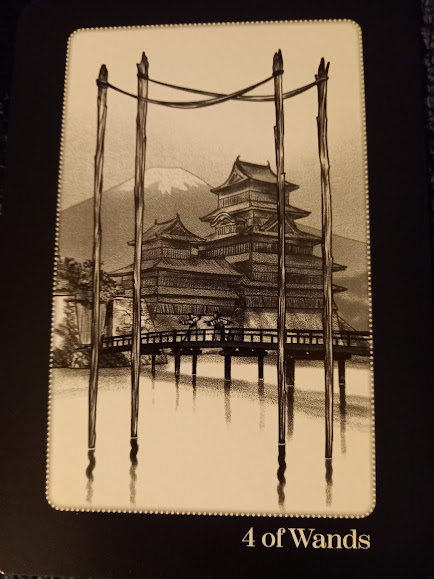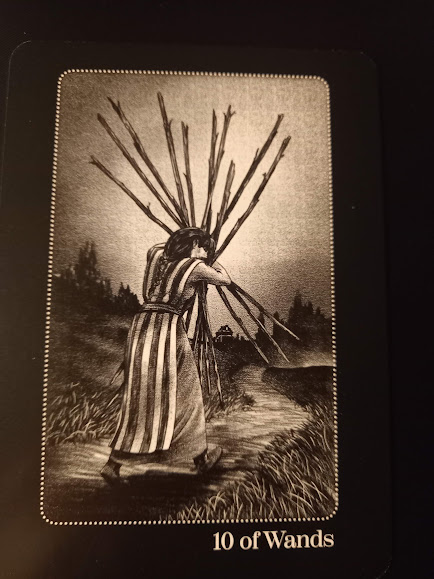A dramatic and compelling deck that shrouds the classic scenes of the Tarot in eternal twilight.
Introducing the Nightfall Tarot , a captivating and evocative rendition of the renowned Rider-Waite-Smith Tarot. Crafted with both newcomers and seasoned practitioners in mind, this exceptional 78-card deck remains faithful to the original interpretations conceived by Arthur Waite and Pamela Colman Smith. However, it also breathes new life into the Tarot realm, infusing it with a host of updated symbols and scenes. In an exploration that transcends the boundaries of traditional Judeo-Christian themes, the Nightfall Tarot incorporates elements from Norse runes, Icelandic staves, Wiccan designs, and astrology, culminating in a Tarot experience that is both inclusive and culturally diverse, perfectly suited for the modern age.
Complementing the deck, the accompanying guidebook offers insightful interpretations and a collection of spreads, allowing for a seamless integration of the powerful imagery contained within. Within the Nightfall Tarot , darkness prevails, enveloping each card in an enchanting melancholy that beckons you to delve into the mysterious depths of your own existence. Within this twilight realm, hidden truths are illuminated, revealing profound insights that lie dormant within the recesses of your being. Prepare to embark on an extraordinary journey, as the Nightfall Tarot invites you to explore the shadowy corners of your life and embrace the enigmatic beauty found within the realm of twilight.
Nightfall Tarot is available now, published by Schiffer/redFeather. You can see the unboxing and flickthrough videos on TikTok.
For those of you worried that this is a dark, depressing, scary deck that only predicts bad things; don't worry. It is printed in black and white (though it occasionally looks sepia in photos, at least when I take them, please don't let that confuse you - they are all black and white!) but it's not actually dark or depressing at all; there's a lot of joy and life in this deck, more than some others I've tried before.
The cards are a bit wider and just a hair longer than standard. The box is just big enough to hold them, with a magnetic closure on the righthand side. The LWB is the same size as the cards and sits above them in the box. The inside base of the box has a picture of some stars and clouds, reproduced on the back of the LWB.
The LWB is quite simple, with a quote from WB Yeats, a short introduction from Amory, and then straight into the card descriptions. The Majors have two pages, one a reproduction of the card and the other with keywords, a description and reversed meanings. In the Minors, each card only has one page, so the image is smaller but it still has just as much information, which is great. Court keywords are situations, not people.
After the cards we have three spreads - one card, three card and the old reliable Celtic Cross - all pictured and described clearly and with care. Finally, Amory talks for a couple of pages about his experiences with Tarot, his hopes when he designed this deck and some specifics about details in some of the cards, which I loved. I always want to know what the artist was thinking, why that detail and not this other one, so I would have read a lot more of that section!
Now, the cards. As I said, they're a bit bigger than normal; I can just about shuffle them in the 'normal' way, but it's a strain, and I find it more comfortable to shuffle them on end instead. The cards have a silver gilt edge and this lovely design on the back:
Amory talks about the design in the book, so I won't spoil anything here! The images on the card have a black frame, with the title printed in the frame on the lower right. Majors have the Roman numerals on the left.
The artwork mostly follows the RWS - I put some random cards side by side and I could see the similarities clearly - but it's been updated, so there are people from all over the world along with Norse runes, Wiccan and Astrological symbols and probably lots more I'm not educated enough to recognise! Some of the faces look Native American, or South Asian, or European; there are people dressed in African or Turkish or Medieval peasant outfits. This is one of my favourites for showing the multiculturalism of the deck:
(Sorry about my flash! Those were the best shots I could get.)
So is this a dark deck? Well, yes and no. Physically, visibly, it's in black and white, so it's darker in that way than many decks. But that doesn't make the images sadder or darker than in other decks, and although a couple of the book's descriptions do edge towards darker (The Six of Wands may not be as beloved as he thinks he is; the Nine of Cups' success is only surface deep) by and large they are the same interpretations we've always known. Some of them are even brighter than usual - the Five of Wands points out that the group may be working together but at cross purposes, as opposed to its usual meaning of infighting! I don't feel that my readings were any sadder or more calamitous with this deck than they would be otherwise, and I've enjoyed using it. Here are some of the 'scary' cards of the deck; Death is standing down, Ten of Wands is nearly home. Admittedly, Ten of Swords, Tower and Devil are pretty scary, but no more so than in any deck, I think!
I'm enjoying using this; the pictures are detailed enough to study without overwhelming, they shuffle nicely, and I can read them easily. There's plenty to learn from it, I think! The readings it gave me are nice and straightforward, so I think a beginner would be fine with this deck, and of course there's plenty here to keep even experienced readers busy for quite a while!

























No comments:
Post a Comment